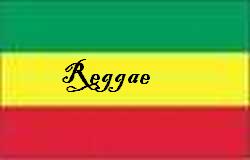 According to Kwame Dawes in Natural Mysticism, the vershan break is “a thing of beauty”: “The vacuum left behind by the withdrawal of the drum and bass, leaving behind the heightened dance of the guitar and keyboard, represents a moment of strange anticipation that affects my whole body. And when the drum and bass enter into that space that has been throbbing with possibility, I am forced to move, to turn, to react” (29). Reggae grew out of the experience of Rastafari, an extension of the African belief system that fused the physical, social, and intrapersonal aspects of being and shares this characteristic with other religions of the African diaspora such as, Lucumi (Santeria), Vodoun (pejoratively, Voodoo), Candomble, and Xango.
According to Kwame Dawes in Natural Mysticism, the vershan break is “a thing of beauty”: “The vacuum left behind by the withdrawal of the drum and bass, leaving behind the heightened dance of the guitar and keyboard, represents a moment of strange anticipation that affects my whole body. And when the drum and bass enter into that space that has been throbbing with possibility, I am forced to move, to turn, to react” (29). Reggae grew out of the experience of Rastafari, an extension of the African belief system that fused the physical, social, and intrapersonal aspects of being and shares this characteristic with other religions of the African diaspora such as, Lucumi (Santeria), Vodoun (pejoratively, Voodoo), Candomble, and Xango. As it evolved during the seventies, reggae became a musical expression of InI—the mystical answer of Rastafari to Babylon (in the Jamaican context, British colonialism) and its philosophies, such as the Cartesian mind-body split. Rastafari preached one-ness of body, mind, and soul. For once you really heard reggae, you had to move: “If you make me move/ Then you know you got the groove” (“Night Shift”). Listening to the groove from Family Man, Lloyd Parks or Robbie Shakespeare and the conscious lyrics of Burning Spear, Max Romeo, Bunny Wailer, Peter Tosh, and Bob Marley, the world became more real.
And because the musicians, “’the players of instrumants” insisted that the music had come for “the healing of a nation,” and that all Jamaicans were not brethren, but idren—sharing a common humanity and divinity with all iration, then the landscape was transformed in our imaginations. In other words, the ethos of reggae with its emphasis on confrontation of Babylon on equal terms, best exemplified in "I Shot the Sheriff," effectively dismantled the apparatus of British colonialism and provided an alternative set of values by which writers/artists of my generation could think about the aesthetic concerns of Jamaica and the Caribbean. We had become postcolonials.
In Natural Mysticism, Dawes also argues that the principles of “reggae aesthetics” can be applied as “consistent principles” to guide socio-political dynamics” (29). The Calabash Literary Festival and Iron Balloons are testaments to the efficacy of the model. For the past twenty years, Kwame Dawes, Colin Channer, and I have been exploring “reggae aesthetics” (at first without a name—kudos to Kwame for this naming act), and it has been interesting to see how our work and lives have been shaped by our individual and collective experiences of reggae.
In my collection of poems, xango music, the subtext to the poems is that the music, culture, and lives of Caribbean peoples are shaped by archetypes such as Xango (the Yoruba warrior/poet) and partially explains why we are attracted to warrior poets such as Michael Manley and Walter Rodney.
Tags:
Jamaica
Jamaican writers
Caribbean writers
Iron Balloons
Walter Rodney
Bob Marley
Reggae
Religion
reggae aesthetics
4 comments:
Came over from Global Voices. Nice blog.
Leon, what can I say?
The people over at Global Voices are just great!
1 Heart,
Geoffrey
Geoffrey, your post has my mind salivating. I want more! Do you speak publicly?
Glad to be of service.
I've been doing lectures and workshops now for a good long time.
Post a Comment